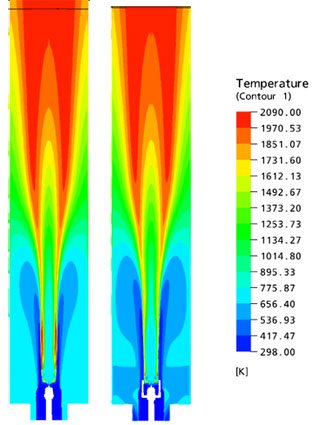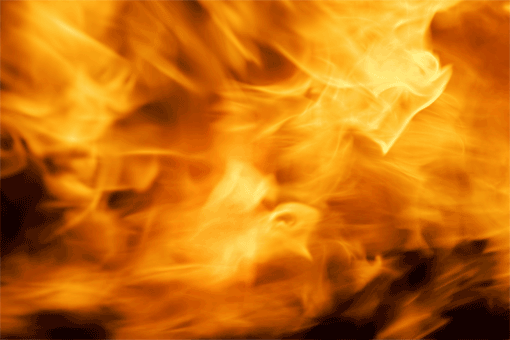Combustion
 Combustible fuels are indisputably the major source of power for most of our industries. The combustion process, which involves complex chemical reactions with transport processes that are governed by fluid dynamics, has come under increasing scrutiny over recent years due to the high levels of CO2 and other pollutants it emits.
Combustible fuels are indisputably the major source of power for most of our industries. The combustion process, which involves complex chemical reactions with transport processes that are governed by fluid dynamics, has come under increasing scrutiny over recent years due to the high levels of CO2 and other pollutants it emits.
The Combustion Process
The combustion process is fundamental to the functioning of several industries including the:
- automotive industry (ICE engine application)
- aerospace industry (jet engine combustors, rocket and missile engines)
- chemical Process industry (process burners, incinerators, biomass burners, calcinations plants)
- energy industry (turbogas burners, boiler burners, coal burners)
- home appliance industry (kitchen gas hot plate, ovens, household heaters)
Combustion device suppliers are under increasing pressure to meet the ever more stringent regulations on the acceptable level of CO2 and other pollutant (CO, NOx, Soot) emissions resulting from the burning of combustible fuels. This has spurted off a new spate of research intended to drive new and better technologies that will result in optimal performance of the combustion devices.
Due to the high cost of temperature resistant measurement probes, laser measurements or atomization particle analysis, CFD calculations have become particularly attractive and convenient for the combustor/burner suppliers to gain a better insight into the workings of their product, allowing them to improve and optimize its efficiency.
CFD Analysis of the Combustion Process
The simulation of a combustion process requires a fluid dynamic transport solution, chemical kinetics for reactive flow modeling, and particle tracking capabilities for oil or coal combustion. Most combustion processes involve a single fuel such as methane and a single oxidizer such as air but there are an increasing number of fuel burning processes that involve more than one type of fuel such as in biomass incinerators or process burners with co-firing capabilities. For this reason a CFD model must have multiple reaction capabilities and a database of the different chemical specie with their respective reaction schemes, reaction rates, activation energy, etc. In fact your CFD software package choice for combustion simulation should include:
- multispecies transport and temperature variable properties (Cp, viscosity...)
- multiple reaction schemes (turbulent driven, chemical activation energy, ignition & quenching models)
- laminar flamelet combustion libraries
- atomization and spray for oil combustion
- gasification for coal or solid particle combustion
- radiation transport and material properties
- emission modelling: thermal and prompt NOx, CO, Soot
The Advantages of using Simulation to Predict the Combustion Process
The accurate prediction of injection/atomization and liquid spray with mixing, combustion and thermal distribution is fundamental to the verification of hot regions leading to excessive thermal stress on walls, flame regions and NOx production, as well as the verification of the stability of the flame. Advanced numerical models such as Large Eddy Simulation (LES) can be effectively deployed to capture turbulent combustion for different flame regimes (premixed, non-premixed, and partially premixed). Compared with an experimental test campaign, simulation is much more cost effective and can be exploited parametrically to find the optimal solution, before carrying out a single physical mandatory test campaign.
Typical simulation activities with a high added value are:
- cold mixing simulation of the injection system to verify and optimize nozzles inlets, or atomizer position
- simulation of secondary air distribution on cooling holes, effusion, liners to balance cooling flow effectiveness
- reactive flow analysis to verify/optimize flame front, thermal field and exhaust emission
- optimization of shape for the secondary recirculation region of a product gases to reduce Nox emission in process burners
- unsteady simulations to verify flame instabilities at critical regimes (e.g. gas turbine humming)
